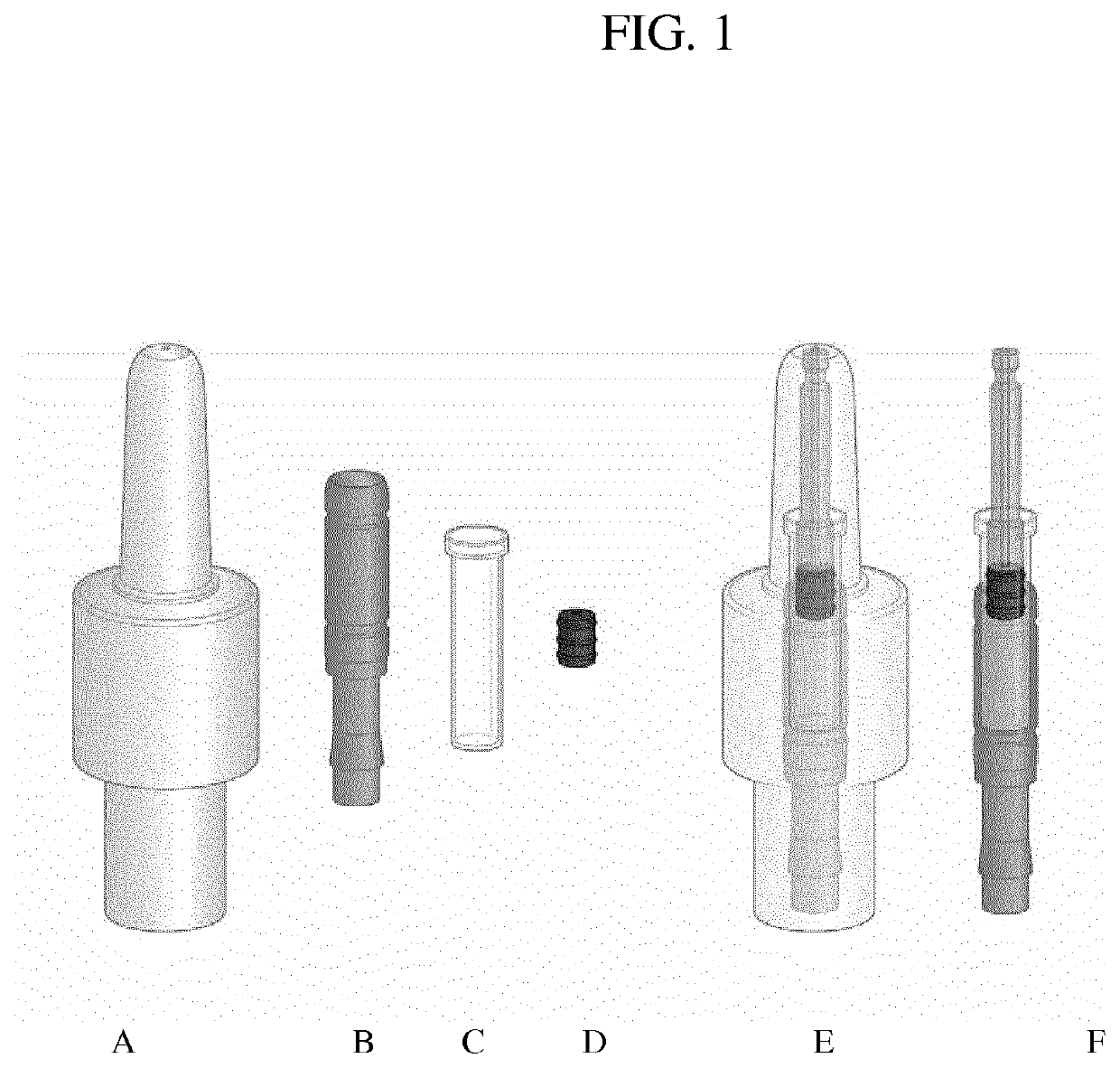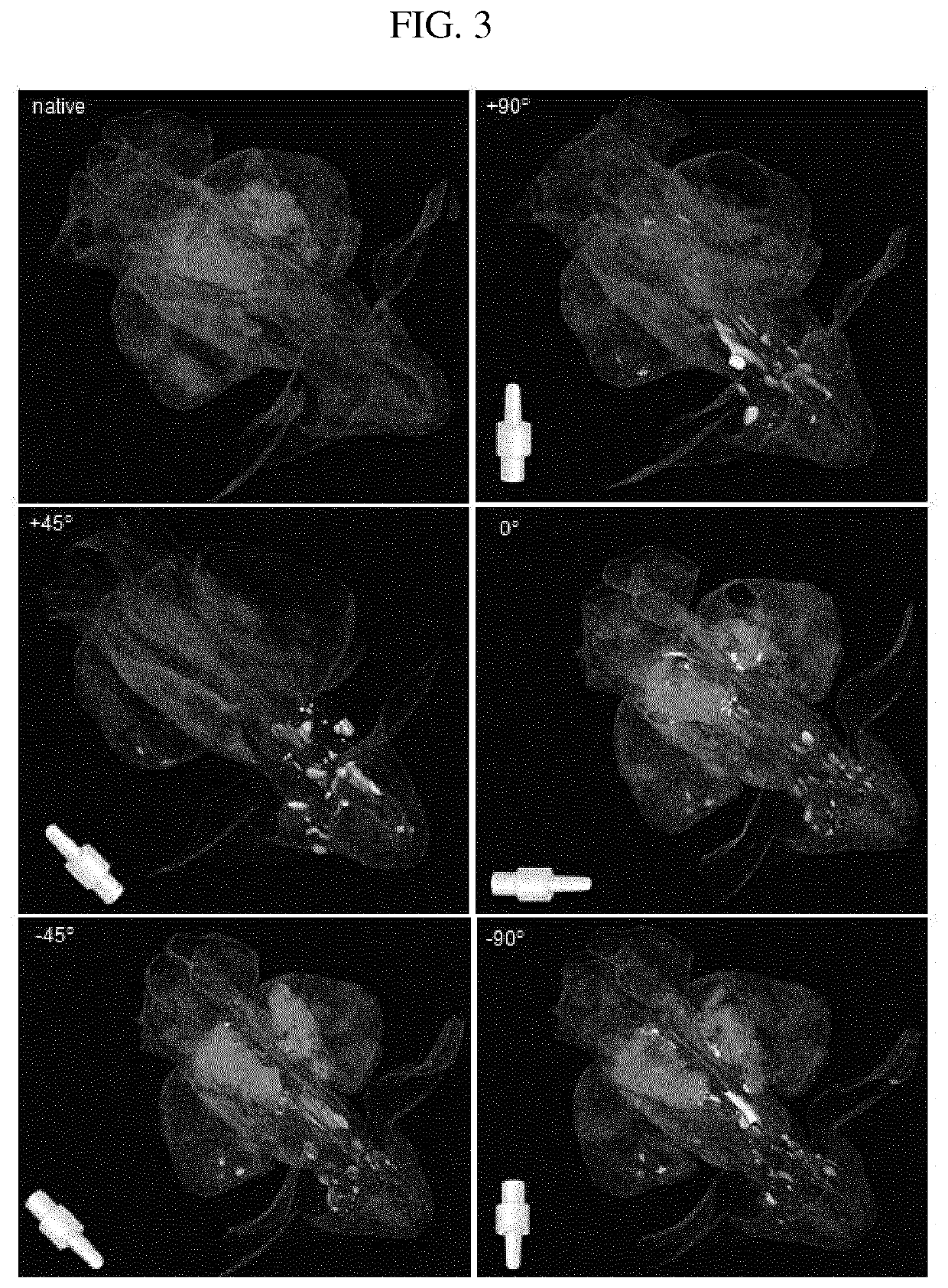Problems may also arise if there is a congestion of the upper
respiratory tract in the patient or if a larger amount of the sprayed fluid from the
nose enters the
oral cavity and is then swallowed by the patient.
However, one cannot optimally adjust the concentration and dose for a nasal application with simple decanting.
The challenge in the preparation of the solution is especially the
pH dependent recomplexing of the active agent with a
solubility shift with each pH change.
As these
midazolam nasal sprays do not necessarily have to be produced in clean rooms, there is the danger of
contamination by germs during production and / or storage.
However, the addition of preservatives to the solution in the nasal sprays frequently results in
irritation of the nasal mucosa.
This
irritation is often perceived as unpleasant by the patients and can therefore negatively affect the desired
sedation of the patient during the diagnostic procedure.
A further
disadvantage of extemporaneous nasal spray preparations according to the
state of art is a certain batch to batch variability which may lead to differences in the amount of active agent administered.
This may be caused, for example, by variations in the spraying device, by incorrect operation of the spray head (pressing sidewards) or an insufficient filling of the spraying tube in a classical nasal spray device.
Therefore, with state-of-the-art nasal sprays, it is often difficult to control and make sure how much of the active agent is actually sprayed into the
nose of the patient.
However, once the patient is laying on the examination table and the table is then inserted into the imaging device for the examination of the patient, an administration in an upright position is virtually impossible.
If the patient
lying down gets restless during the imaging process, an additional dose administration of the
sedative may be severely hampered with the nasal spray of the state of the art or may lead to a situation where the examination has to be stopped, respectively.
If the readministered dose is too low or fails to be applied, the patient remains restless.
By contrast, if the dose is too high, the patient may no longer sufficiently react to instructions of the staff during the
examination procedure.
If insufficient
sedation is achieved, the output quality of the imaging process can be so poor that a repetition of the
examination procedure is indicated.
As the imaging devices and examination procedures are very expensive and the corresponding instruments need to be well utilized, repetitions of such imaging examination procedures or delays cause unnecessarily high costs which have to be avoided in view of the
limited resources in the health-care
system.
Nor should the
increased stress factor of the patient as a consequence of insufficient imaging results or repeated measurements be underestimated.
Often the patient also comments that he / she has big troubles with the long tubular form of the
magnet and its confinement.
This may even lead to the patient refusing to have the examination carried out.
In addition, coils and further devices required for the examination (e.g. helmets, headsets,
breathing belts, pillows, belts, ECG electrodes, caps, posture belts) lead to a corresponding tightness causing further patient problems.
All these factors lead to a certain restlessness which may negatively affect the quality of the examination.
Often this results in a short
irritation that is preannounced to the patient.
In the affected patients, this is often not possible without
premedication.
Patients who fall asleep during the examination (as it is, for instance, often the case when using higher i.v. doses of the substance
midazolam) can no longer follow the instructions and impair the examinations “by
breathing”, i.e. they cannot hold their breath and cause, by spontaneous
breathing, an inferior or even non-diagnostic
image quality.
However, due to the lying position of the patient, this is rather limited, since the patient must also be moved from the examination position.
Due to the low degree of
filling in the nasal spray according to the state of the art this is impeded.
If the patient wears a head coil during the examination, a nasal spray according to the state of the art is virtually impossible to use because the space around the
nose is too small for orienting the nasal spray into the correct position.
In addition, the filling of the spraying device cannot be ensured without an uncontrolled additional burden for the patient.
As a precaution measure, many centers do not allow the patients to drive a vehicle themselves after the use of the nasal spray.
When using multiple-use nasal sprays there is a risk for some patients that diseases are transmitted from patient to patient.
When using multiple-use nasal sprays, the spray head might get in contact with the
epithelium of several patients resulting in the transmission of germs if the same head is used for subsequent patients.
Even though these germs do not necessarily lead to an infection, they can increase the germ load substantially which can be a problem particularly for immunosuppressed patients [Ylikoski J. et al., “Bacterial
flora in the nasopharynx and
nasal cavity of young healthy men”, ORL Journal Otorhinolaryngol Relat Spec., 1989; 51 (1): 50-55].
However, this is very cumbersome because the staff must be trained accordingly, and each change must be recorded and checked to comply with the
hygiene regulations.
The reliable and safe administration of drugs in
emergency situations but also the appropriate administration of drugs in situations of spatial limitation is often a great challenge.
Seizures or epileptic fits or seizures may occur totally unpredictably at any time in everyday life.
Often the patient lies in an unfavorable position or is difficult to access for a rapid administration of the medication (depending on the setting or position, the movement of the patient impairs the application).
The patient himself or the relatives are often confronted with the difficult situation how they should best administer the medicament as quickly as possible.
Also, the spasm or the
biting fits associated therewith, lead to a stiffening of the patient so that an approach or also, in particular, the
oral application of an emergency medication is impossible.
However, once the patient is on the examination table an administration in an upright position is virtually impossible.
Furthermore, using traditional multi-dose sprays, it is not possible to repeatedly trigger sprays in a non-upright position.
Thus a nasal
emergency treatment with the traditional multi-dose sprays is possible only to a very limited extent.
Further, the aspiration of air can result in unequal application of volumes, which is undesired.
The intrinsic and extrinsic impairment when administering drugs in the situations mentioned above thus poses a great difficulty for the affected patient, his relatives as well as the intervening
nursing staff.
 Login to View More
Login to View More 


